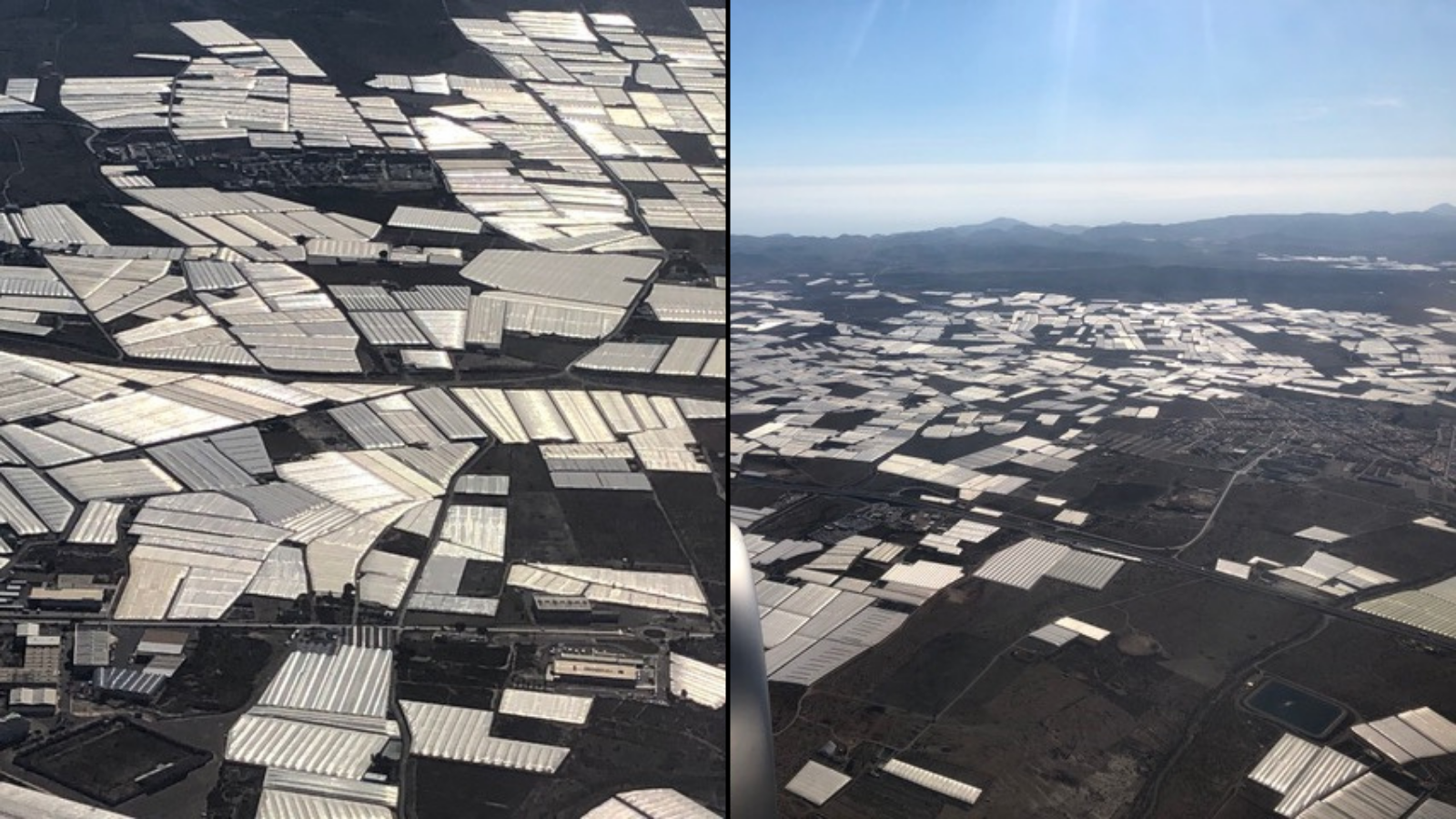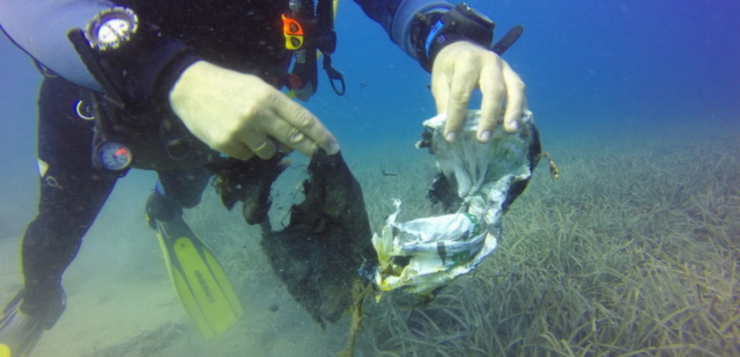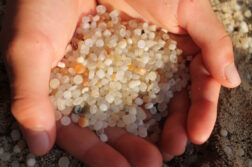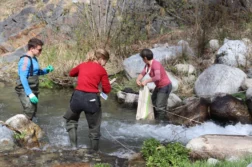Plastic pollution is a threat to the marine environment, of which there is no longer any doubt. “Sea of Plastic” of Almeria is one of the sources of marine pollution by microplastics more conspicuous in the Spanish coasts. A study led by Martin Dahl of the University of Stockholm, in collaboration with the Group of Ecology of Aquatic Macrophytes (GAME) of the Center for Advanced Studies of Blanes (CEAB-CSIC), has analyzed the presence of microplastics in sediments of marine prairies of Posidonia oceanica over the past century. Posidonia oceanica is an exclusive marine plant of the Mediterranean Sea known to efficiently trap organic and inorganic particles and bury them in its sediments for millennia.
Sediment soundings were carried out in two prairies near El Ejido, off the coasts of Aguamarga and Roquetas.
Almeria is known for its intense agricultural industry with 30,000 ha of greenhouses covered with plastic. The results of the study show unequivocally how the contamination and accumulation of microplastics was negligible until the mid-1970s, to subsequently increase dramatically.

“The concentration of microplastics in the Posidonia of Roquetas de Mar began to increase with the massive installation of greenhouses in the area, and we have a very high time coincidence. Microplastics are dangerous for the food chain, and we we eat through fish, ”explains Nerea Piñeiro-Juncal, a specialist in marine soil biogeochemistry at GAME-CEAB.
As a control, a third sediment survey was carried out on the ground of a Posidonia oceanica meadow of the integral reserve in the National Park of the Cabrera Archipelago, in the south of Mallorca. The number of plastic microparticles of less than five millimeters in each kilo of sediment in Cabrera ranged between 68 and 362, however, in Roquetas soared to 2,173, about 30 times more, evidencing the impact of the fruit and vegetable industry in marine pollution by microplastics.
“We began to know some of the consequences of the presence of microplastics in the marine environment, but many of them are being studied or have not yet been identified. Regardless of these possible consequences, the study of the dynamics of microplastics in ecosystems serves as a tracer of human activity and how the waste we generate reach the most remote corners of our planet. Once again, Posidonia oceanica has shown its enormous potential as a witness and as part of the solution to the excesses of disproportionate humanization, “concludes Miguel Ángel Mateo Mínguez, head of the Aquatic Macrophytes Ecology Group.
The scientific study was cited in an article published last Saturday, September 4 in the newspaper El País. This is a very complete and in turn vindictive report in which the problem of agricultural plastics in Almeria is illustrated and highlighted. Intensive agriculture, which has transformed the province over the past 45 years, has a high environmental cost with spontaneous landfills of plastic waste in any corner and visible from any road.
Reference article:
Martin Dahl, Sanne Bergman, Mats Björk, Elena Diaz-Almela, Maria Granberg, Martin Gullström, Carmen Leiva-Dueñas, Kerstin Magnusson, Candela Marco-Méndez, Nerea Piñeiro-Juncal, Miguel Ángel Mateo, A temporal record of microplastic pollution in Mediterranean seagrass soils, Environmental Pollution, Volume 273, 2021, 116451, ISSN 0269-7491,





